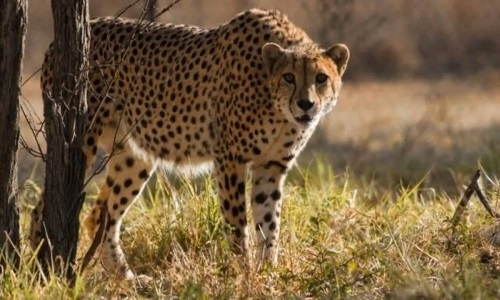First Cheetah, Now Cheetal Kuno in news for declining population of cheetals
| Date :22-Dec-2023 |

By Ankita Garg
Though Kuno National Park (KNP) has started releasing the imported cheetahs into wild after keeping them into captivity for more than four months, another issue of herbivore population put the officials on toes. In order to cope with the declining prey for cheetah, the Madhya Pradesh Forest Department has come into action to bring herd of deer from Pench and Kanha tiger reserves. Principal Chief Conservator of Forest (Wildlife) Aseem Srivastav said that detail plan is ready to release cheetal to Kuno National Park. He said that strict action will be taken against illegal poaching of wildlife. Wildlife activist have raised objection over the management in Kuno Park. They said that cheetahs were in captive for past four to five months and during this period, forest officials did not focus towards the population of herbivore. In a survey held in January 2023, Kuno had 18 cheetals per sqkm of area and now it is declined to 16 cheetal per sqkm of area. Forest officials informed that during year 2013, there were 61 cheetals in per sqkm of area but during year 2021, their population remained as 23 per sqkm of area. They said that main prey-base of cheetah is Cheetal because they are physically weak to kill other animals. On an average, cheetah kills prey in three to four days. Due to lack of herbivore, cheetahs will have to travel long way to search food.
In a recent report of Wildlife Institute of India (WII) Dehradun, it is revealed that population of herbivore that are major food for the cheetah is declining around the forestry of National Park. Experts said that main food of cheetah is cheetal (spotted deer) and Kuno forest has only 16 cheetals over one sqkm of area (on an average). As per standard measure, there should be at least 27 cheetals in one sqkm of area. WII has raised concern over declining population of cheetal in the area. Ajay Dubey, Wildlife activists and Secretary Prayatna, said, “In past ten years, instead of growing up, cheetal population has been declined and main reason for this is illegal poaching. People kill the cheetal, Nilgay, etc in large number. They sell the meat of cheetal for Rs 5,000 to 6,000 per kg and Nilgay for Rs 10,000 kg. PCCF Aseem Srivastav said, “Kuno has sufficient grassland. There are around 8,000 to 9,000 cheetals, peacock, chinkara, Nilgay and other herbivore in more than 18,000 of population. There would not be problem to prey the cheetal as most of herbivore prefer to take food in groups. We have planned to bring around 1,300 cheetal from Kanha and Pench Tiger Reserve.
In contrast to this statement, local forest officials of Kuno National Park said that there are sufficient killing for the cheetah but they can be quite lazy after being in captivity for more than four months. They said, however, this is not good for their health but gradually they will cope-up with the situation Three cheetahs released into wild so far: After Agni and Vayu, another female cheetah Veera has been released into Kuno National Park wild. The park management informed that two male cheetahs were released on December 17 at Ahera gate. After releasing Veera, monitoring team checked the location of two male cheetahs and both were found to be roaming separately in nearby areas. On December 20, female cheetah Veera has been released. Cheetah Steering Committee has assigned a team to monitor the three cheetah into wild. There are 14 adult and one cub cheetah in Kuno. There are seven male Gaurav, Shaurya, Vayu, Agni, Pawan, Prabhas and Pavak and seven female cheetah including Asha, Gamini, Nabha, Dheera, Jwala, Nirva and Veera.